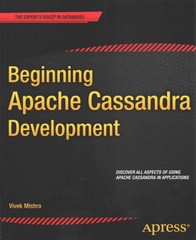Question
Hello im a bit confused on how the professor is answering the question can someone explain in what methods he is using Example : question
Hello im a bit confused on how the professor is answering the question can someone explain in what methods he is using
Example :
question number 4 he says the 4 GB = 4 x 2^10 MB = 4 x 2^10 x 2^3 Mb but why is 2^3 included etc please answer with detail how he got the answers thank you
4 GB = 4 x 2^10 MB = 4 x 2^10 x 2^3 Mb = 4 x 2^13 Mb = 2^15 = 32,768 Mb.
Q1. How many picoseconds are there in 75 microseconds?
Q2. 12,500 is how many orders of magnitude larger than 3?
Q3. What is the period of a 4 GHz clock signal in milliseconds?
Q4. What is the frequency of a clock signal with a period of 25 nanoseconds? Your answer must use a prefix (K, M, or G) and the frequency must be a whole number.
Q5. A disk is rotating at 7500 RPM. How long does it take to make one complete revolution? Your answer must use a prefix (milli, micro, nano, or pico) and the length of time must be a whole number.
Q6. If a computer takes 150 seconds to execute 3 billion instructions, what is its instruction execution rate?
Q7. 15% of the instructions in a program take 1 nsec to execute, 25% take 2 nsec to execute, and the rest take 3.5 nsec to execute. What is the average execution time per instruction for this program?
Q8. Computer A is 60% faster than computer B. Computer A takes 20 seconds to run a program. How long will computer B take to run the same program?
Q9. Computer A is 60% slower than computer B. Computer A takes 20 seconds to run a program. How long will computer B take to run the same program?
Q10. How many Mb are there in 4 GB?
THESE ARE THE ANSWERS FOR QUESTIONS ABOVE
Q1. 75 microseconds = 75 x 10^6 picoseconds. Q2. 12500/3 = 4166.67 = 4.167 x 10^3. So, 12500 is 3 orders of magnitude larger than 3. Q3. Period = 1/4 = 0.25 nanoseconds = 0.25 x 10^-6 milliseconds Q4. Frequency = 1/25 = 0.04 GHz = 0.04 x 10^3 MHz = 40 MHz (whole number). Q5. One rotation = 1/7500 minutes = 60/7500 seconds = (60x1000)/7500 millisec = 8 millisec (whole number). Q6. Rate = (3 x 10^9)/150 = 2 x 10^7 Hz (it's 20 millions per second).
Q7. Average = 1x0.15 + 2x0.25 + 3.5x0.6 = 2.75 nsec. Q8. Computer B takes (1 + 60%)x 20 = 1.6 x 20 = 32 seconds Q9. Computer B takes (1 - 60%)x 20 = 0.4x20 = 8 seconds Q10. 4 GB = 4 x 2^10 MB = 4 x 2^10 x 2^3 Mb = 4 x 2^13 Mb = 2^15 = 32,768 Mb.
Step by Step Solution
There are 3 Steps involved in it
Step: 1

Get Instant Access to Expert-Tailored Solutions
See step-by-step solutions with expert insights and AI powered tools for academic success
Step: 2

Step: 3

Ace Your Homework with AI
Get the answers you need in no time with our AI-driven, step-by-step assistance
Get Started


